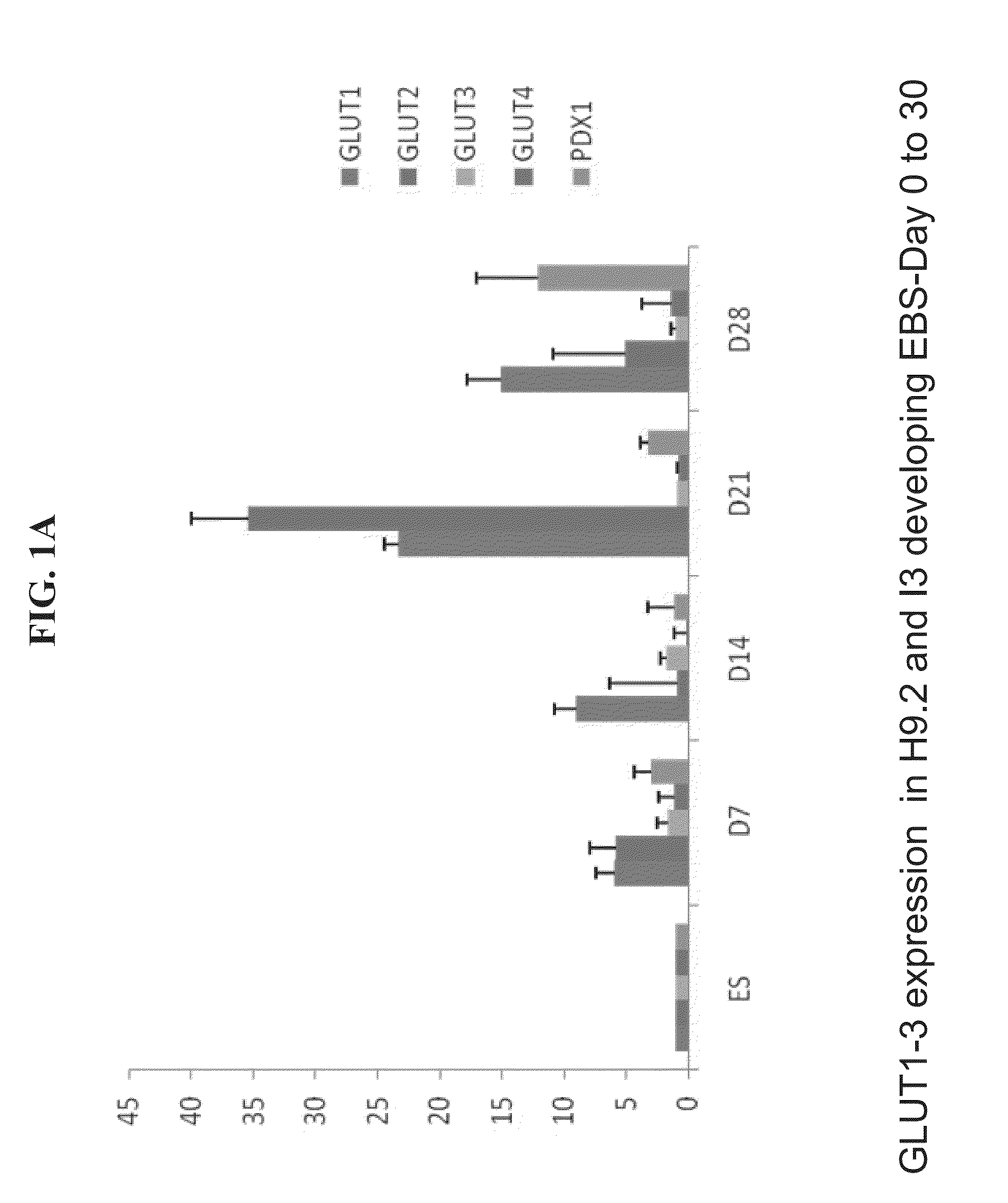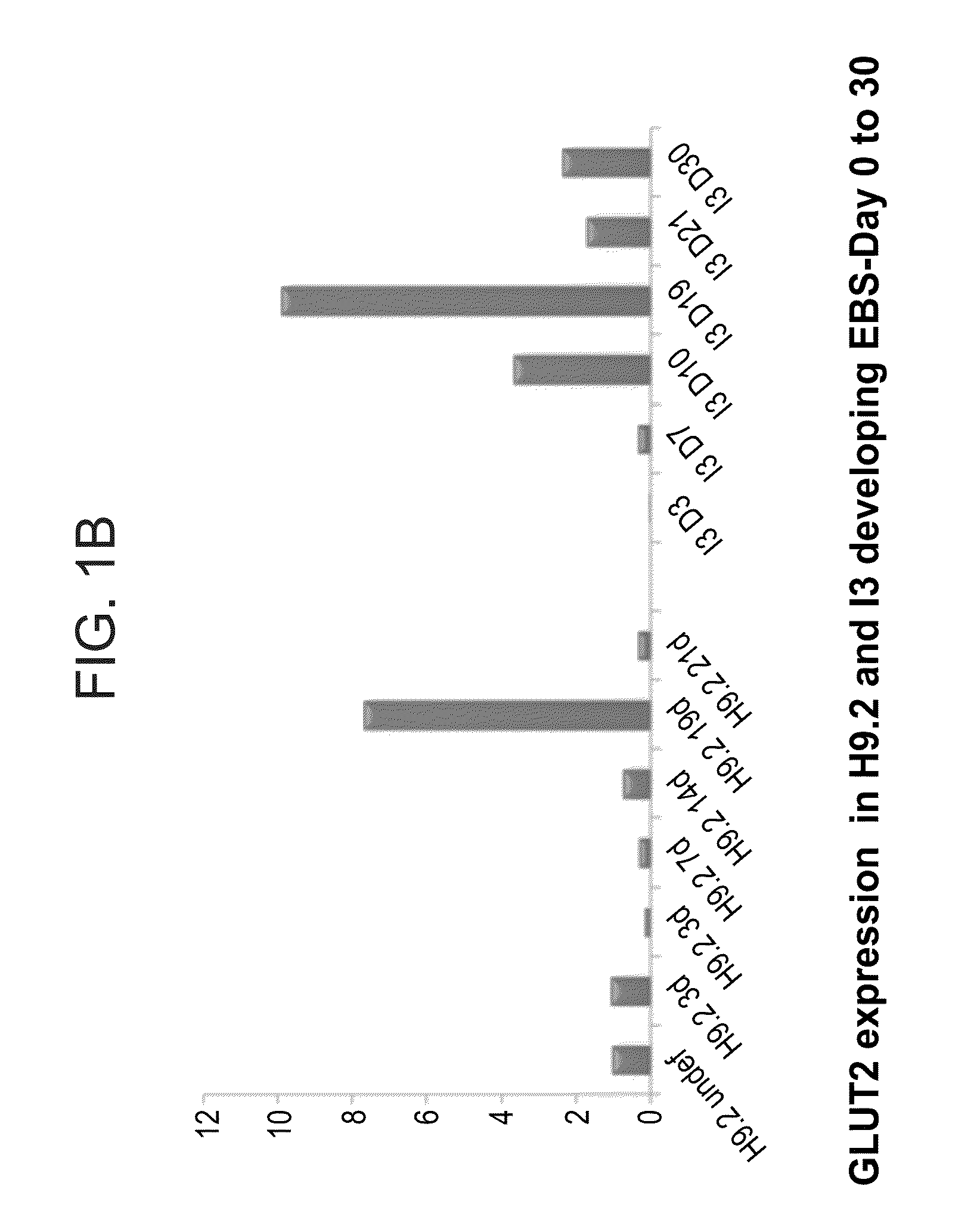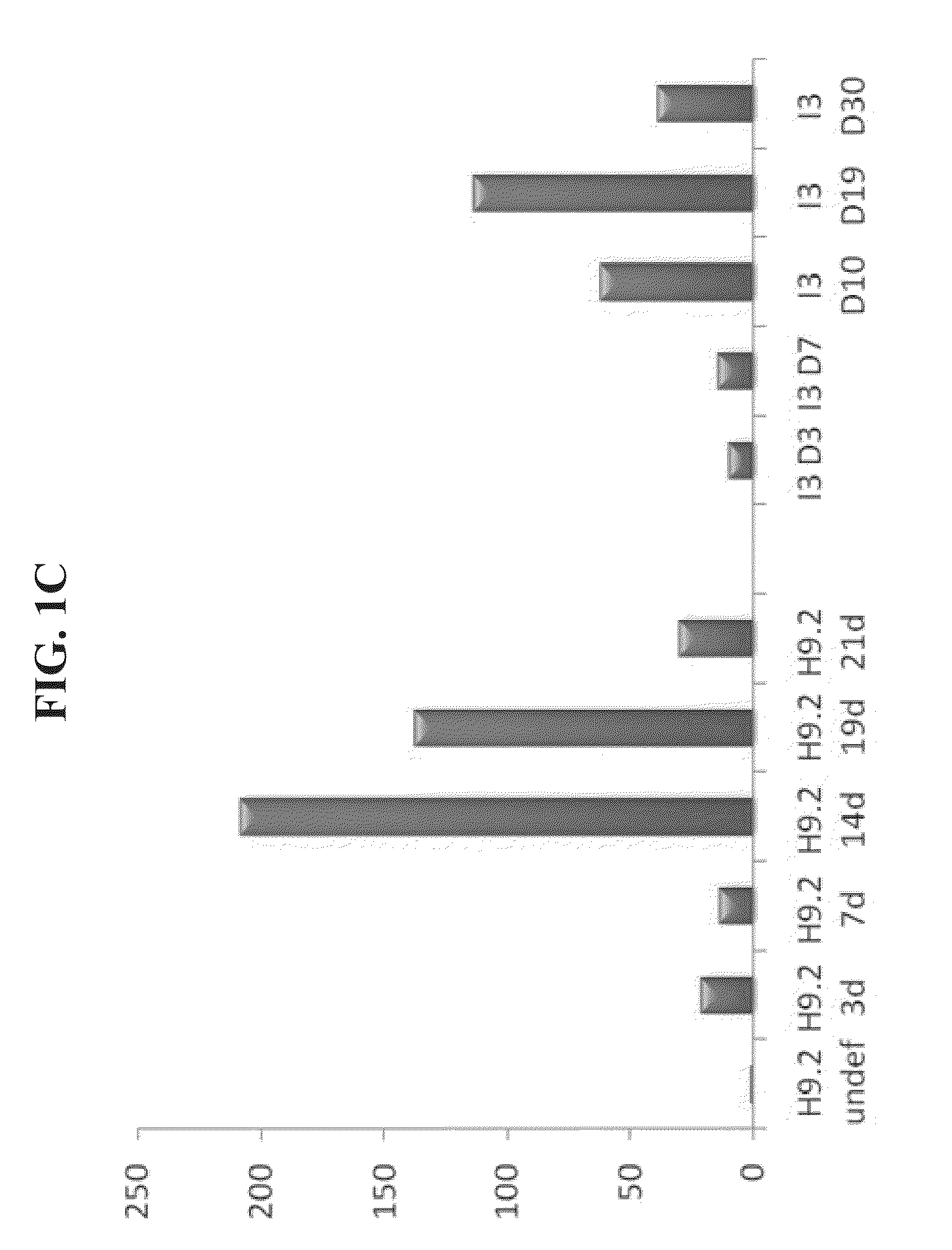Populations of pancreatic progenitor cells and methods of isolating and using same
a technology of pancreatic progenitor cells and pancreatic cancer, which is applied in the field of pancreatic progenitor cell populations, can solve the problems of 3-4 expansion of islet cell mass, difficult tissue culture expansion, and inability to prevent long-term complications of diseas
- Summary
- Abstract
- Description
- Claims
- Application Information
AI Technical Summary
Problems solved by technology
Method used
Image
Examples
example 1
Selection of GLUT2 Expressing Cells in Embryoid Bodies
[0192]Materials and Methods
[0193]Cell culture: The hES H9.2 and 13 cell line and an iPS line were used. Undifferentiated hES cells were grown on mitotically inactivated mouse embryonic fibroblast (MEF) in 80% DMEM / F12 medium (Biological industries, Bet-Haaemek, Israel), 20% knockout serum replacement, 1 mM GLUTamx, 1% non-essential amino acid, 0.1 mM 2-mercaptoethanol and 4 ng / ml basic fibroblast growth factor (bFGF) (all from Gibco Invitrogen, Paisley, UK). They were then dissociated by applying 1 mg / ml type IV collagenase (Worthington Biochemical Corporation, Lakewood, N.J., USA). One hour later, the cells were transferred into plastic petri dishes (Miniplast, Ein-Shemer, Israel) in order to allow their aggregation. The resultant embryoid bodies (EBs) were cultured for 12 days in 80% Dulbeco's modified Eagle's medium, 20% knockout serum replacement, 1 mM GLUTamx, 1% non-essential amino acid (from Gibco Invitrogen), with a chang...
example 2
Analysis of Glut2 Expression in Pluripotent Stem Cells Differentiated According to Various Protocols
[0226]Materials and Methods
[0227]Protocol 1: Protocol 1 was affected according to D-Amour et al [Nature Biotechnology, 2006] and Kroon et al [Nature Biotechnology, 2008] incorporated herein by reference.
[0228]Differentiation was carried out in RPMI supplemented with Glutamax and varying concentrations of FBS (0% for the first 24 hours, 0.2% for the second 24 hours and 2% for subsequent days of differentiation). The cells were cultured with 100 ng / ml activin A and 25 ng / ml Wnt3a for the first 24 hours. The cells were then ultured in RPMI with 0.2% FBS and activin at 100 ng / ml for an additional 2 days. Next, the cells were cultured with RPMI with 2% FBS and KGF (25-50 ng / ml) for 3 days. The medium was changed to DMEM with 1% B27 supplement, KAAD-cyclopamine (0.25 μM) all-trans retinoic acid (2 μM) and Noggin (50 ng / ml) for 3 days. The medium was changed to DMEM with 1% B27 for 3 days.
[0...
PUM
| Property | Measurement | Unit |
|---|---|---|
| volumes | aaaaa | aaaaa |
| thickness | aaaaa | aaaaa |
| size | aaaaa | aaaaa |
Abstract
Description
Claims
Application Information
 Login to View More
Login to View More - R&D
- Intellectual Property
- Life Sciences
- Materials
- Tech Scout
- Unparalleled Data Quality
- Higher Quality Content
- 60% Fewer Hallucinations
Browse by: Latest US Patents, China's latest patents, Technical Efficacy Thesaurus, Application Domain, Technology Topic, Popular Technical Reports.
© 2025 PatSnap. All rights reserved.Legal|Privacy policy|Modern Slavery Act Transparency Statement|Sitemap|About US| Contact US: help@patsnap.com



